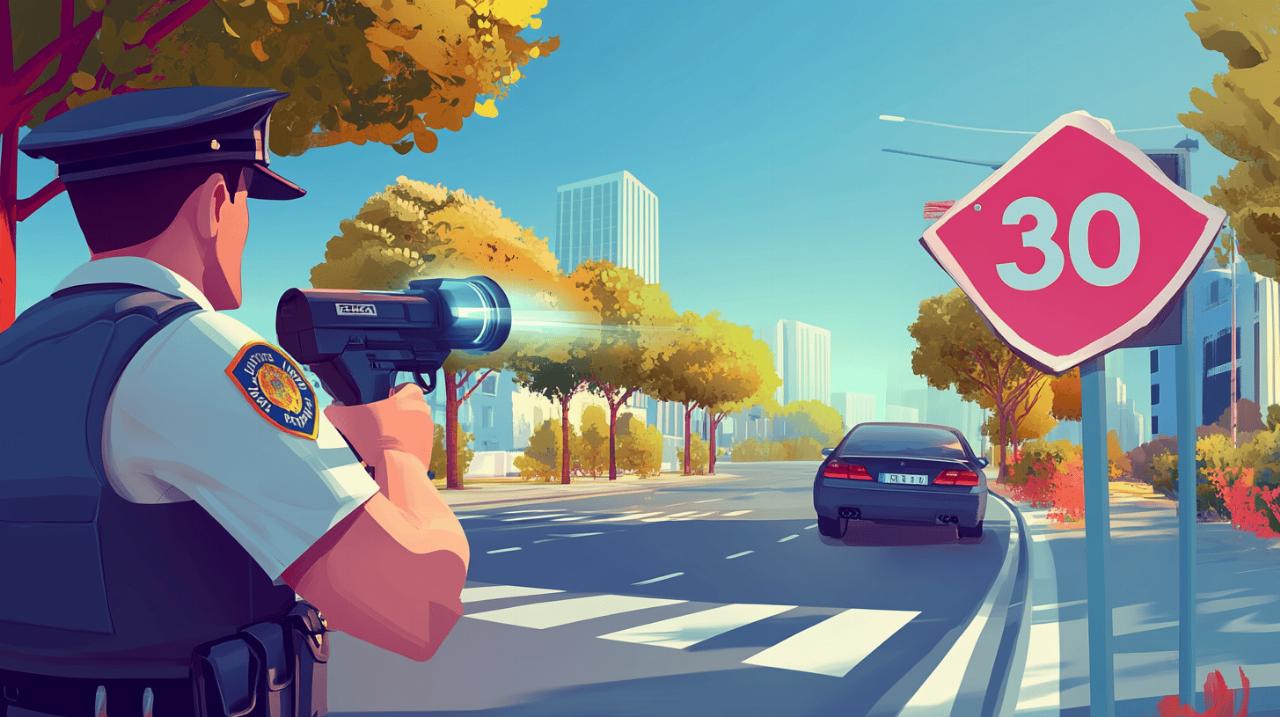Preparing for a motorcycle tour across France and Monaco requires more than just a reliable machine and a sense of adventure. A thorough understanding of the Highway Code is essential for ensuring not only your safety but also that of other road users. Whether you're a seasoned rider or relatively new to motorcycling, revisiting the rules and regulations can make a significant difference to your confidence and competence on the road. The following tips are designed to help you approach your revision in a structured and effective manner, ensuring that you're fully prepared for the journey ahead.
Structuring your revision: planning and consistency
Creating a Realistic Timetable for Highway Code Study
Diving headfirst into the Highway Code without a clear plan can often lead to frustration and wasted effort. Establishing a realistic timetable is the first step towards effective revision. Consider your daily routine and identify specific times when you can dedicate your attention to studying. Treat these sessions as you would any other important appointment. By allocating specific periods for each section of the Highway Code, you can ensure that no area is overlooked. For instance, you might spend one session focusing on traffic signs, another on rules for motorcyclists, and yet another on hazard perception. This structured approach not only makes the task less daunting but also allows you to track your progress more effectively.
The benefits of regular, short study sessions
Cramming the night before an exam is rarely an effective strategy, and the same principle applies to mastering the Highway Code. Research consistently shows that regular, short study sessions are far more beneficial than prolonged periods of intense revision. Aim for around thirty minutes each day rather than attempting a marathon five-hour session. This approach helps to reinforce your understanding over time and prevents mental fatigue. It is particularly important when considering the nuances of road rules that may differ slightly from those in other countries, such as France. By revisiting the material frequently, you allow your brain to consolidate the information, making it easier to recall when you need it most. This method also fits more comfortably into a busy schedule, ensuring that your revision remains consistent and manageable.
Finding your optimal learning approach
Exploring different revision methods and resources
Everyone absorbs information differently, and finding the method that works best for you is crucial. Some individuals prefer the traditional approach of reading the Highway Code book, whilst others find that interactive apps and online resources are more engaging. The DVSA offers an official Theory Test kit available both online and through mobile applications, which can be particularly useful for those who prefer a more dynamic learning experience. Flashcards are another excellent tool for learning traffic signs, allowing you to test yourself on the go. Experimenting with various methods will help you identify which format makes the information stick most effectively. Remember that combining different resources can also be beneficial, as it reinforces your understanding through multiple channels. Whether you choose to read, watch videos, or use digital tools, the key is to remain engaged and actively involved in the learning process.
The Importance of Self-Testing and Mock Examinations
Reading through the Highway Code is only part of the equation. To truly gauge your understanding, regular self-testing is essential. Mock examinations and practice quizzes can highlight areas where your knowledge may be lacking, allowing you to focus your revision more effectively. The DVSA provides free practice theory tests online, which closely mirror the format of the actual exam. By taking these tests regularly, you can become familiar with the types of questions you will face and develop strategies for answering them efficiently. Additionally, self-evaluation builds confidence and reduces anxiety, as you will have a clearer sense of your preparedness. For the hazard perception component, the DVSA Hazard Perception app is an invaluable resource, offering realistic scenarios that help you develop the quick decision-making skills necessary for safe riding. Consistent self-testing ensures that your revision is not passive but instead an active process of learning and improvement.
Enhancing your knowledge through external support
Why a Motorcyclist-Focused Refresher Course is Worthwhile
Whilst self-study is undoubtedly important, there is significant value in seeking external support. A refresher course tailored specifically for motorcyclists can provide expert guidance and address any gaps in your knowledge. These courses are designed to cover the most relevant aspects of the Highway Code for riders, ensuring that you are fully prepared for the unique challenges you will face on the road. The opportunity to ask questions and engage with experienced instructors can clarify any areas of confusion and reinforce your understanding. Although there is a cost associated with such courses, the investment is often well worth it for the added confidence and reassurance they provide. Particularly if you are planning a significant journey through France and Monaco, the peace of mind that comes from knowing you are thoroughly prepared is invaluable. Many riders find that the structured environment of a course helps them to focus their revision more effectively than they might on their own.
Collaborative learning: studying with fellow riders
Learning need not be a solitary endeavour. Forming a study group with fellow riders from your motorcycle club or local community can be both enjoyable and highly effective. Explaining concepts to one another is a powerful way to cement your understanding, as teaching forces you to articulate your knowledge clearly. Collaborative learning also allows you to tackle difficult sections together, pooling your collective knowledge to overcome any obstacles. Discussing real-world scenarios and sharing experiences can provide practical insights that are not always apparent from reading the Highway Code alone. Furthermore, studying with others can make the process more engaging and less tedious, transforming what might otherwise be a chore into a social activity. Motorcycle Tours and similar organisations often provide resources and support to help riders prepare for their journeys, ensuring that you have access to the information and assistance you need.
Preparing for your european motorcycle adventure
Understanding International Road Rules for France and Monaco
Embarking on a motorcycle tour across France and Monaco requires an awareness of the differences in road rules and regulations compared to the United Kingdom. Whilst many of the fundamental principles remain the same, there are important distinctions that you must understand to ensure a safe and compliant journey. For instance, speed limits, priority rules at junctions, and the use of certain types of roads may vary. It is essential to familiarise yourself with these differences before you set off. The Highway Code provides a solid foundation, but supplementing your knowledge with information specific to the countries you will be visiting is crucial. Resources such as official government websites and travel guides can offer detailed insights into what to expect. Understanding these nuances will not only help you to avoid fines and penalties but also to ride more confidently and safely in unfamiliar territory.
Final checks before embarking on your tour
Once you have completed your revision, conducting a series of final checks is essential to ensure that you are fully prepared for your tour. Review your notes and take a final practice theory test to confirm that your knowledge is solid. Ensure that all your documentation, including your driving licence and insurance, is in order and that you have the necessary paperwork for travelling in France and Monaco. Additionally, verify that your motorcycle is in excellent condition, with all safety equipment such as helmets, gloves, and protective clothing up to standard. It is also worth checking that your bike is equipped with the required items for travel in Europe, such as a reflective jacket and a warning triangle. Taking the time to complete these final checks will give you the confidence to embark on your adventure, knowing that you have done everything possible to prepare.
Essential Equipment and Legal Requirements for Motorcyclists
Understanding Provisional and Full Licence Requirements for Different Motorcycles
Before you can legally ride a motorcycle, it is vital to understand the licensing requirements that apply to different types of bikes. If you are a new rider, you must first complete a Compulsory Basic Training course, commonly referred to as CBT. After completing this course, you are permitted to ride a motorcycle up to 125cc with a power output not exceeding 11kW. During this period, you must display L-plates and are not permitted to carry a pillion passenger or ride on motorways. You have two years from the date of your CBT to pass both the theory and practical tests to obtain a full licence. A light motorcycle licence, known as A1, restricts you to a bike up to 125cc and 11kW, whilst a standard motorcycle licence, or A, restricts you to a bike up to 25kW and a power-to-weight ratio not exceeding 0.16kW per kilogram for the first two years. Understanding these restrictions is crucial, as failing to comply can result in penalties and invalidate your insurance.
Mandatory safety gear: from helmets to reflective clothing
Safety gear is not merely a recommendation but a legal requirement for all motorcyclists. Helmets are compulsory for all riders and passengers on motorbikes, scooters, mopeds, tricycles, and quad bikes. The helmet must meet British safety standards and be properly fastened at all times. In addition to a helmet, it is strongly recommended that you wear eye protection, strong boots, gloves, and suitable clothing to protect yourself in the event of an accident. Bright or fluorescent clothing significantly increases your visibility during daylight hours, whilst reflective strips or clothing ensure that you are seen at night. These precautions are especially important when riding in unfamiliar areas or in heavy traffic. Whilst provisional licence holders are not permitted to carry a pillion passenger, full licence holders may do so provided the motorcycle is designed for it and the passenger is also wearing a helmet. Ensuring that you and any passenger are equipped with the appropriate safety gear is not only a legal obligation but also a vital step in protecting yourself on the road.
Essential Equipment and Legal Requirements for Motorcyclists
 Before embarking on any motorcycle tour, whether it's a jaunt across the British countryside or an ambitious adventure through France and Monaco, understanding the legal requirements and essential equipment for motorcyclists is absolutely paramount. The Highway Code serves as the foundation for road safety, and being thoroughly versed in its regulations isn't just about passing your theory test—it's about protecting yourself and other road users. This section will guide you through the crucial aspects of licensing and mandatory safety gear, ensuring you're properly prepared and legally compliant before you set off.
Before embarking on any motorcycle tour, whether it's a jaunt across the British countryside or an ambitious adventure through France and Monaco, understanding the legal requirements and essential equipment for motorcyclists is absolutely paramount. The Highway Code serves as the foundation for road safety, and being thoroughly versed in its regulations isn't just about passing your theory test—it's about protecting yourself and other road users. This section will guide you through the crucial aspects of licensing and mandatory safety gear, ensuring you're properly prepared and legally compliant before you set off.
Familiarising yourself with these requirements now will not only help you avoid potential fines or legal complications but will also significantly enhance your safety on the road. From understanding what you can ride with a provisional licence to knowing exactly what protective clothing is compulsory, this knowledge forms the bedrock of responsible motorcycling. The DVSA and GOV.UK provide comprehensive guidance on these matters, and it's well worth taking the time to get to grips with them properly.
Understanding Provisional and Full Licence Requirements for Different Motorcycles
Getting on the road as a motorcyclist in the UK involves navigating a structured licensing system designed to ensure riders develop their skills progressively. If you're starting out, you'll need to complete a Compulsory Basic Training (CBT) course before you can legally ride on public roads. The CBT course isn't a test you can fail in the traditional sense—it's a practical training session covering road safety, an eyesight check, and hands-on riding experience. Once you've successfully completed your CBT course, you'll receive a DL196 certificate, which is valid for two years.
With a provisional licence and a valid CBT certificate, riders aged 17 or over can ride a motorcycle up to 125cc with a power output not exceeding 11kW. However, there are significant restrictions: you must display L-plates at all times, you cannot carry a pillion passenger, and motorway riding is strictly forbidden. These limitations are in place to ensure you gain experience in safer environments before progressing to more demanding riding scenarios.
To obtain a full motorcycle licence, you'll need to pass both the motorcycle theory test and the practical test within those two years following your CBT. The theory test comprises multiple-choice questions based on the Highway Code, Know Your Traffic Signs, and Riding – the Essential Skills, along with a hazard perception component. Preparing thoroughly for this is crucial—regular practice theory test sessions and using official DVSA resources will significantly improve your chances of success.
The full licence categories determine what you can ride. A light motorcycle licence (A1) restricts you to bikes up to 125cc and 11kW, whilst a standard motorcycle licence (A) initially limits you to a machine up to 25kW with a power-to-weight ratio not exceeding 0.16kW/kg for the first two years. Understanding these restrictions is essential, particularly if you're planning a motorcycle tour where you might be tempted to hire or borrow a more powerful machine. Always ensure you're legally entitled to ride the motorcycle you choose, and remember that once you hold a full licence, you're permitted to carry one pillion passenger, provided the bike is designed for it—but this remains off-limits to provisional licence holders.
Mandatory safety gear: from helmets to reflective clothing
When it comes to motorcycle safety, your protective clothing isn't just recommended—much of it is legally required. The most fundamental piece of equipment is your helmet, which is compulsory for all riders and passengers on motorbikes, scooters, mopeds, tricycles, and quad bikes. There are no exceptions to this rule in the UK, and riding without a properly fastened, regulation-compliant helmet can result in hefty fines and penalty points. Your helmet should meet British safety standards (look for the BSI Kitemark, UNECE 22.05, or equivalent markings), and it should fit properly—a loose or ill-fitting helmet offers significantly reduced protection in an accident.
Beyond helmets, wearing bright and protective clothing is strongly advised throughout the Highway Code. Whilst not all protective gear is legally compulsory (aside from helmets), investing in quality protective equipment is one of the smartest decisions any motorcyclist can make. Strong boots, gloves, and suitable clothing—preferably with armour at key impact points—can make the difference between minor injuries and something far more serious. Eye protection is also recommended, whether that's a visor on your helmet or separate goggles, and ear protection can help prevent long-term hearing damage from wind noise.
Visibility is another critical safety consideration, particularly given the British weather and varying light conditions. Wearing light or brightly coloured helmets and fluorescent clothing significantly increases your visibility to other road users during daylight hours. This is especially important when riding in urban environments or during overcast conditions. For riding at night or in poor visibility, reflective clothing or reflective strips become essential. Reflective materials catch the light from vehicle headlamps, making you far more noticeable to drivers who might otherwise fail to see you until it's too late.
When you're out on the road, particularly in heavy traffic, always be acutely aware of your surroundings before manoeuvring. Take extra care when filtering through traffic—a common practice for motorcyclists but one that requires constant vigilance. Other road users may not expect you to be moving between lanes, so making yourself as visible as possible with appropriate clothing and being mindful of blind spots is vital. Remember, the Highway Code is there to protect all road users, including pedestrians, cyclists, horse riders, and drivers, so understanding your responsibilities and rights helps create safer roads for everyone. Proper preparation, the right equipment, and a solid grasp of legal requirements will set you up for a safer, more enjoyable motorcycle tour—whether you're heading to the coast or across the Channel.





